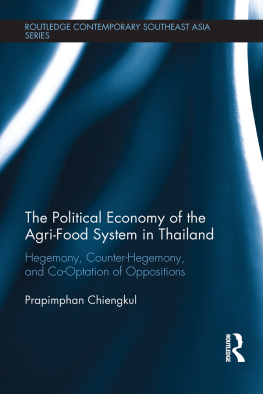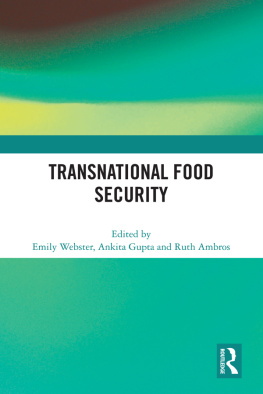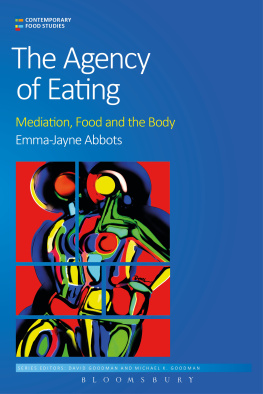First published 1994 by Berg Publishers
Published 2020 by Routledge
2 Park Square, Milton Park, Abingdon, Oxon OX14 4RN
605 Third Avenue, New York, NY 10017
First issued in hardback 2021
Routledge is an imprint of the Taylor & Francis Group, an informa business
Copyright Pat Caplan
All rights reserved. No part of this book may be reprinted or reproduced or utilised in any form or by any electronic, mechanical, or other means, now known or hereafter invented, including photocopying and recording, or in any information storage or retrieval system, without permission in writing from the publishers.
Notice:
Product or corporate names may be trademarks or registered trademarks, and are used only for identification and explanation without intent to infringe.
Publishers Note
The publisher has gone to great lengths to ensure the quality of this reprint but points out that some imperfections in the original copies may be apparent.
ISBN 13: 978-0-367-71805-3 (hbk)
ISBN 13: 978-0-85496-384-3 (pbk)
Why Food?
In this lecture, I shall seek to do two things. One is to show how an anthropological approach can give us particular kinds of understanding about peoples food choices. Or to put it the other way round, to show how the topic of food is a good way of gaining an understanding of what anthropology is about. Secondly, I want to suggest some gaps in the existing anthropological work on food, and some possible lines of future work. I do not pretend to be saying anything particularly new tonight, nonetheless, I hope that by juxtaposing a number of issues, some new slants may emerge and new questions arise.
Some have defined the business of anthropology as being that of making the exotic and different comprehensible i.e. understanding other societies. But in turning this round to include ourselves, whoever we are, we have also to make the familiar exotic, to question our taken-for-granted assumptions which are nowhere more deeply held than in regard to our eating habits. I propose to bear in mind throughout this lecture two questions: Why do people eat what they do? and Whose responsibility is it that they do?
Looking at food, then, involves looking at the everyday as well as the exotic, the special as well as the mundane. It involves us in varying levels of analysis, from the individual, through the household, to the community (however defined) right up to the world economic system. For an anthropologist, it involves us in the study of culture, including our own, as well as political economy. Food can be viewed as a language, a way of communicating with our fellow human beings or even our deities. It is of course, a basic necessity, but it is also much more. To convey some of its qualities, I begin with an extract from one of the most famous passages in 20th century European literature:
And suddenly, the memory came back to me. The taste was that of the little piece of madeleine cake which one Sunday morning at Combray when I had gone to her room to say good morning to her, my aunt Leonie had offered to me after dipping it in her lime-flower tea. The sight of the petite madeleine cake had not reminded me of this before I had tasted it But when, out of a former past, nothing any longer remains, after the death of humans, after the destruction of things, alone, frailer but more alive, more immaterial, more persistent, more faithful, the smell and the taste still remain for a long time, like souls, to be recalled, to wait, to hope, on the ruin of everything else, to carry without yielding, on this almost impalpable droplet, the immense edifice of memory (Proust 1987:46, my translation).
In this extract, Proust captures the exceptionally powerful way in which taste can represent so much: the past, memories of childhood, a sense of place and time and ones own self within it. Rupert Brookes lines, penned on the battlefield of the First World War, also memorably capture something of the same qualities, an evocation of a world in which everything is in its proper place:
Stands the church clock at ten to three?
And is there honey still for tea?
Food, then, can evoke taste, memory, feelings and emotions; for an anthropologist it is also about social relations, identity and selfhood: Tell me what you eat, and I will tell you who you are.
The format of my lecture will be in three parts, following my title, although I propose to take the liberty of broadening the conventional definitions of its three parts. But before beginning with my first topic, feasting, I want to say a little bit about the anthropology of food.
Anthropological Approaches to Food
Apart from the publication of Richards much praised but little emulated study of food among the Bemba, a people of central Africa, in 1939, food did not really become a fashionable topic in British anthropology until the rise of structuralism in the 1960s, particularly following the work of the French anthropologist Lvi-Strauss. He and his followers sought to understand food as a cultural system, an approach which clearly recognises that taste is culturally shaped and socially controlled.
Lvi-Strauss, as my anthropological colleagues will not need reminding, was influenced by theories of structural linguistics. In the first volume of his Structural Anthropology (1968), he considers the differences between English and French cooking and introduces the word gusteme: the constituent elements of the cuisine of a society as analogous in the field of taste to the phonemes of language. Lvi-Strauss maintains that deciphering the codes underlying such matters as food enables the anthropologist to reach a significant knowledge of the unconscious attitudes of the society or societies under consideration (ibid: 87).
In The Raw and the Cooked (1970), the first volume of his study of Amerindian mythology, Lvi-Strauss considers the basic operations of cookery, such as boiling, roasting and smoking. For him, cooking our food is one way in which we are different from animals, and so the distinction between cooked and raw food is linked to another crucial distinction in human thought, that between culture and nature. His famous culinary triangle sets out diagrammatically the way in which the cooked is a cultural transformation of the raw, while the rotten is a natural transformation of either the raw or the cooked (ibid: 335 et seq.; 1965).
Some have criticised Lvi-Strauss work on food, even going so far as to dismiss it as nonsense (Leach 1970, Lehrer 1972, Goody 1982, Mennell 1985), but there is no doubt that it has been influential, especially his contention that food is not only good to eat but also good to think with (bonnes penser).
Roland Barthes, a French semiologist, also utilises a linguistic analogy in the understanding of food, searching for a code or grammar. His basic argument in this context, as in others, is that where there is meaning, there is system. Barthes sees food as a sign as well as a need and indeed the need itself is highly structured: Substances, techniques of preparation, habits, all become part of a system of differences in signification; and as soon as this happens, we have communication by way of food (1975:51). Indeed, he suggests that an entire world (social environment) is present in and signified by food.








